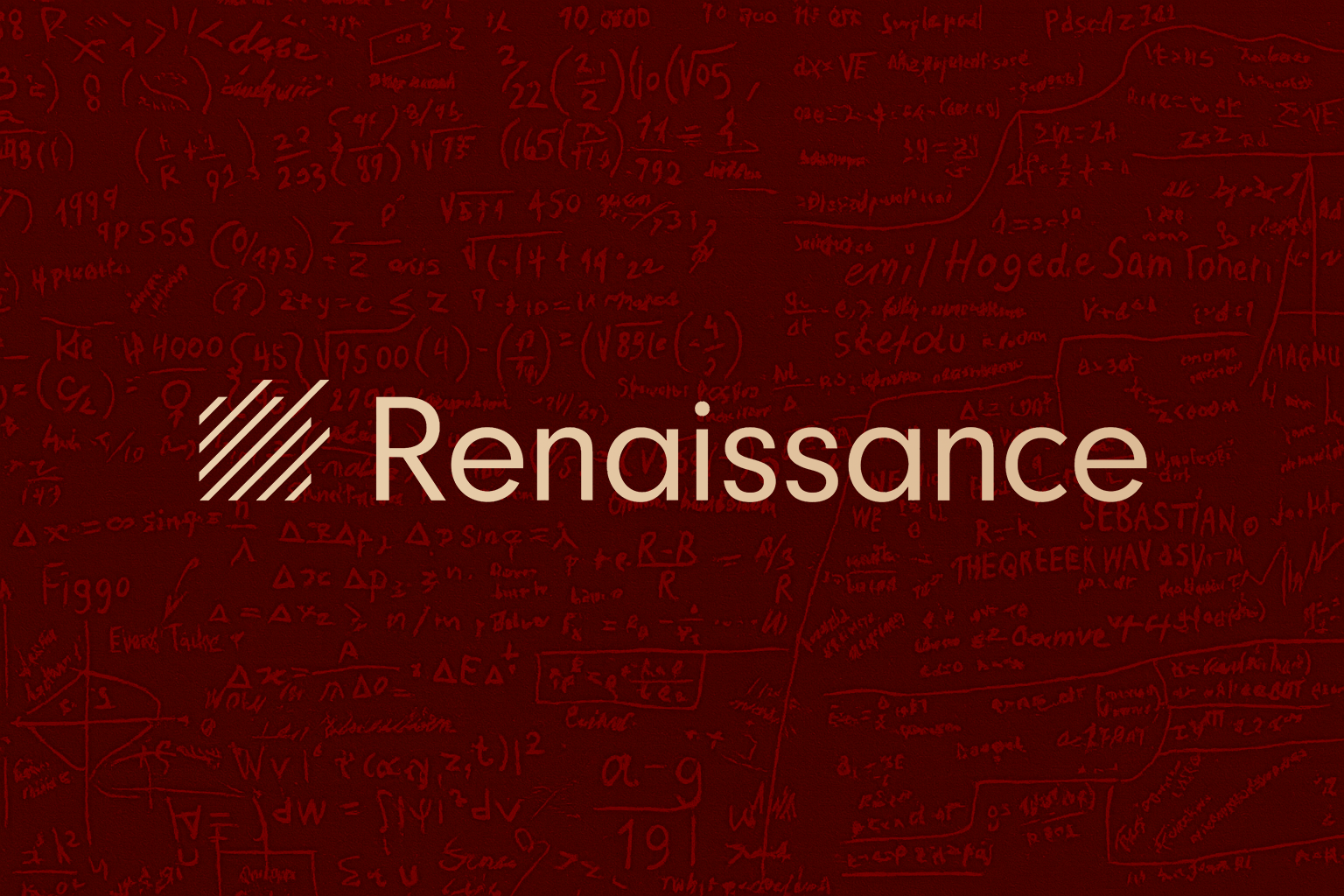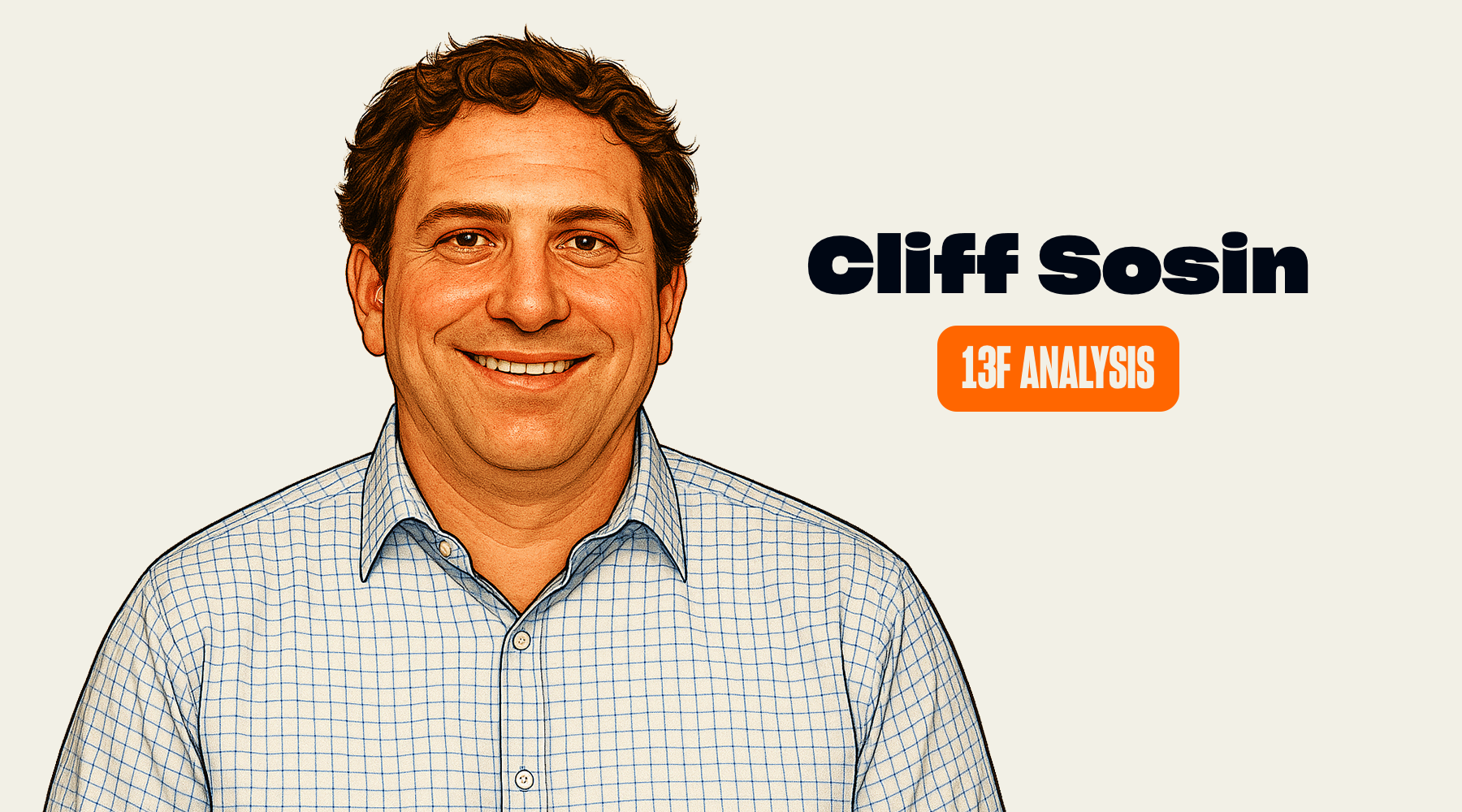A math professor turned $1,000 into $46.5 million by being wrong 49% of the time—generating 66% annual returns for 34 years straight. The most profitable hedge fund in history isn't even trying to invest. Discover how Renaissance Technologies built a money-printing machine that extracts $60 billion from markets in this deep dive.
Executive Summary: The Five-Minute Version
Start with the impossibility—Renaissance Technologies' Medallion fund has generated 66% annual returns before fees for 34 years straight. That's not a typo. In an industry where beating the market by 5% makes you a hero, they're up 66% every single year. Since 1988, they've never lost money. Not once.
Here's what shouldn't exist: A hedge fund run by mathematicians who can't read a balance sheet, operating from a strip mall on Long Island, that turned $1,000 into $46.5 million over three decades. While Warren Buffett needs to understand a business to invest, Renaissance's computers trade thousands of stocks they know nothing about—except their price patterns.
The business model: Renaissance doesn't invest. They run a casino where they're always the house. Their computers find tiny edges—being right 50.75% of the time—and bet millions of times per year. Like a casino needs just a 2% edge in blackjack to print money, Renaissance needs just that quarter-percent edge, executed 300,000 times per day.
The moat: Every other quant fund employs thousands. Renaissance has 400 people total, maybe 200 touching the models. Every other fund has multiple competing strategies. Renaissance has one model everyone works on together. Every other fund takes outside money. Renaissance kicked out all external investors in 2003, keeping the $10 billion Medallion fund entirely for employees.
The numbers: $60 billion in performance fees extracted from markets. $30 billion net worth for founder Jim Simons alone. 39% annual returns after a 44% performance fee. Zero losing years in 34 attempts.
The lesson: When you discover a money-printing machine, the last thing you do is scale it. You keep it small, keep it secret, and optimize for performance per dollar, not total dollars. Most businesses fail trying to grow. Renaissance succeeds by refusing to.
The Impossible Business Model
Picture this: It's August 2007. Mortgage markets are imploding. Goldman Sachs' $30 billion quant fund is hemorrhaging money. Renaissance's Medallion fund loses $1 billion—20% of its value—in three days. The partners gather in Jim Simons' smoke-filled office, ready to override their computers and start selling.
Then something remarkable happens. They don't touch anything. The models keep trading. By year-end, Medallion is up 85.9%.
This is the paradox of Renaissance Technologies. Every business school professor will tell you markets are efficient. You can't beat them consistently. You definitely can't beat them by 56 percentage points every year for three decades. And yet here's a firm whose worst five-year drawdown was half a percent. Half!
The conventional wisdom says you need to understand what you're investing in. Peter Lynch spent weekends visiting shopping malls to spot retail trends. Warren Buffett reads 500 pages a day of annual reports. Renaissance's 90 PhD mathematicians don't even know what most of the companies they trade actually do. Former employees joke that half of them couldn't read a balance sheet if their bonus depended on it.
Here's the thing most people miss: Renaissance isn't in the investment business. They're in the pattern recognition business. They've built a machine that watches millions of price movements and finds fleeting patterns invisible to human eyes—then bets on those patterns repeating just often enough to matter.
Part I: How Renaissance Actually Makes Money
The Core Engine
Let's strip away the mythology and look at the machine itself. Renaissance generates roughly $5 billion in annual revenue from Medallion alone, but the way they get there violates most of what you learned in business school.
Start with the basic transaction. A stock moves from $100.00 to $100.01. In any normal investment firm, this is noise. Background static. But Renaissance's computers see something different. They see that when this stock moves one penny after that other stock moved two pennies, while copper futures dropped 0.3% and the yen strengthened against the euro, there's a 50.75% chance a third stock will rise 0.5% within the next hour.
That's not much of an edge. You'd lose money betting your retirement on it. But what if you could make that bet 10,000 times per day? And what if you sized each bet using the Kelly Criterion—a formula developed for gambling that tells you exactly how much to wager based on your edge?
The math works like this: Each trade might net $100 on a $10,000 position—a 1% gain. After transaction costs, maybe it's 0.5%. But multiply that by 300,000 trades per day, and suddenly you're printing money. The true cost—including infrastructure, salaries, and the supercomputers required—runs about $750 million annually. Against $5 billion in profits, that's an 85% margin. In the hedge fund business, where 20% margins are exceptional, this is insanity.
But here's where it gets interesting. While competitors chase obvious signals—earnings beats, merger announcements, economic data—Renaissance optimizes for the invisible. Their models don't know or care why patterns exist. Former executive Peter Brown puts it perfectly: "We're right 50.75% of the time, but we're 100% right 50.75% of the time. You can make billions that way."
The Revenue Architecture
Renaissance's wealth generation isn't one business—it's a perfectly calibrated ecosystem that would make a Swiss watchmaker weep with envy.
The crown jewel, Medallion, manages $10-15 billion depending on who you ask and when. This sounds small—Bridgewater manages $150 billion. But here's the beautiful constraint: They keep it small on purpose. In 2000, when the fund made 128% while markets crashed, they could have raised $100 billion from desperate investors. Instead, they kicked everyone out.
Why? Because their strategy is capacity-constrained. They're making hundreds of thousands of tiny trades, each trying to capture margins thinner than tissue paper. If they managed $50 billion instead of $10 billion, they'd move markets with every trade. Their 66% returns would become 20% returns. Still good, but why settle for good when you're achieving impossible?
The institutional funds—Renaissance Institutional Equities Fund and others—manage another $60 billion. These generate maybe $1.2 billion in annual revenue. Respectable, but not remarkable. They exist partly as a release valve for strategies that work at scale but don't meet Medallion's standards, and partly because why not take fees from investors desperate to give you money?
Margin Analysis: The Numbers That Shouldn't Exist
In 2020, while the world melted down, Medallion generated 149% gross returns. After Renaissance took its 5% management fee and 44% performance fee, investors still netted 76%.
Let me put that in context. The average hedge fund charges "2 and 20"—2% management, 20% performance. Renaissance charges 5 and 44. It's the highest fee structure in the industry. And investors would pay 5 and 90 if they could get in.
Why? Because the math still works. If you're Citadel generating 20% gross returns, your investors net 14% after fees. If you're Medallion generating 66% gross returns, investors net 39% even after Renaissance takes half. Would you rather keep 80% of average returns or 50% of impossible returns?
The institutional funds charge normal fees—1% and 10%. They generate normal returns—basically S&P 500 plus a few points with lower volatility. This isn't incompetence. It's physics. The strategies that work at $60 billion scale are fundamentally different from what works at $10 billion.
The Strategic Moat Quantified
Every business school case study asks the same question: What prevents copying? With Renaissance, the answer isn't what you'd expect.
The obvious moat is their technology. They have 50,000 computer cores, 150 gigabits per second of global connectivity, and databases growing by 40 terabytes daily. Building this would cost hundreds of millions.
But Citadel has money. Two Sigma has money. They're all building massive data centers. So that's not it.
The real moat has three layers, each reinforcing the others:
First, the data. Since the 1980s, Renaissance has been collecting, cleaning, and structuring market data with an obsessiveness that borders on pathological. They have tick-by-tick price data from the 1960s. They have weather patterns, satellite imagery, shipping data—anything that might correlate with anything. Sandor Straus, their early data architect, started collecting intraday pricing when everyone else was happy with daily closes. That 20-year head start compounds.
Second, the single model architecture. Every other quant fund runs multiple strategies that compete for capital. At Renaissance, everything feeds into one model. When someone improves the currency trading algorithm, it automatically benefits the equity algorithms because they're all interconnected. It's like the difference between having ten separate computers versus one supercomputer with ten times the power.
Third—and this is the killer—the incentive structure. Of the 400 Renaissance employees, about 200 work on Medallion. They're not competing for bonuses. They're all investors in the same fund, working on the same model, where improving the model by 1% puts millions in everyone's pocket. Try replicating that at Goldman Sachs where teams compete for bonus pools.
Part II: The Strategy Nobody Else Can Execute
The Anti-Playbook
If you were teaching a business school class on quantitative trading, you'd tell students to hire from Wall Street, develop multiple uncorrelated strategies, scale assets to maximize fees, and maintain secrecy between teams to prevent information leakage.
Renaissance does the opposite of all of this.
Instead of hiring from Wall Street, they refuse anyone with finance experience. Jim Simons famously said: "We learned it's easier to teach smart people about markets than to teach market people how to be smart." Their best performers came from IBM's speech recognition team, from astrophysics programs, from code-breaking agencies. One partner spent months typing French verb conjugations into a computer despite not speaking French.
Instead of multiple strategies, they built one monolithic system. The code running Medallion contains several million lines, all readable by every researcher. There's no compartmentalization. A string theorist can modify the commodity trading algorithm if they have an idea.
Instead of scaling assets, they've capped Medallion at $10 billion for twenty years. They literally return all profits to investors every six months to prevent the fund from growing. In 2003, they kicked out every external investor rather than manage more money.
The trade-off only makes sense if you're optimizing for returns per dollar instead of total dollars under management. Every other fund optimizes for assets because that's how founders get rich—2% of $100 billion beats 44% of $10 billion. Unless that $10 billion doubles every year.
Value Chain Revolution
The traditional quant fund value chain looks like this: Hire PhDs, develop signals, test strategies, allocate capital, execute trades, measure performance. Total headcount: 2,000 minimum. Time to profitability: Three years. Sustainable edge: Five years if you're lucky.
Renaissance rebuilt the entire chain. They made it collaborative instead of competitive. They made code transparent instead of siloed. They automated capital allocation instead of using human judgment. They focused on millions of tiny trades instead of thousands of big bets.
But here's the genius part—they structured compensation so everyone wants exactly this. At a normal fund, you want your strategy to get the most capital. At Renaissance, you want the overall model to perform because that's what you're invested in.
Competitive Dynamics: The Graveyard of Attempts
Since 1990, at least a dozen serious attempts have been made to replicate Renaissance's model. The casualty list reads like a who's who of finance:
D.E. Shaw tried in the 1990s. They hired similar talent, built similar infrastructure. They generate good returns—20% annually. But 20% isn't 66%.
Citadel assembled an army of mathematicians. They manage $50 billion profitably. Ken Griffin is worth $35 billion. But Citadel's best year ever would be Medallion's worst year since 1990.
Two Sigma, founded by ex-D.E. Shaw executives, explicitly modeled themselves on Renaissance. They manage $60 billion, employ 1,600 people. Their returns? About 15% annually after fees.
The pattern is always the same: Competitors see Renaissance's returns and think they understand the model. They hire PhDs. They build data centers. They develop signals. They miss the collaborative culture, the single model architecture, and the willingness to stay small. And they discover too late that Renaissance isn't winning because they're smarter—they're winning because they're structured differently.
Part III: The Current Challenge
The $15 Billion Question
Right now, as you're reading this, Renaissance is facing a decision that will define the next decade.
The issue is capacity. Medallion has crept from $5 billion to $10 billion to possibly $15 billion. Each increase requires more sophisticated execution, more careful trade hiding, more acceptance of slippage. At some point—and nobody knows where—the strategy breaks.
The math is brutal: At $10 billion, making 300,000 trades per day, average position size might be $100,000. Small enough to not move markets. At $20 billion, positions double. Suddenly you're the whale everyone's watching. Your trades get front-run. Your signals decay. Your 66% returns become 30% returns.
Here's what the real-time data tells us: In 2022, Medallion "only" returned 33% gross. Still spectacular, but half their historical average. Was it a bad year, or are they hitting capacity constraints? External observers can only guess.
The Threat Matrix
Renaissance has survived the dot-com crash, the financial crisis, the COVID pandemic. But the current environment presents three specific threats that could actually matter:
The biggest is computational commoditization. In 1990, Renaissance's computers were 100 times more powerful than competitors'. Today, anyone can rent equivalent computing power from Amazon for a few million dollars. The infrastructure moat is evaporating.
The second threat is talent dilution. Renaissance's LinkedIn page shows median employee tenure of 12 years. But newer hires increasingly come from the same schools and firms as everyone else's hires. When your edge is hiring differently, hiring the same is death.
The third threat—and the one they can't control—is strategy decay. Every edge in markets eventually gets arbitraged away. Renaissance has survived by constantly finding new edges. But what if the low-hanging fruit is gone? What if the patterns that remain are too subtle even for their machines?
Part IV: What Renaissance Teaches Us
The Capacity Constraint Principle
The most counterintuitive lesson from Renaissance is that some businesses should stay small. Every MBA program teaches growth. Scale economies. Market dominance. But Renaissance proves the opposite can be optimal—if you're willing to accept the trade-off.
Here's how to think about it: You're running a restaurant with a secret recipe that makes customers line up around the block. Traditional logic says franchise, scale, go public. But what if the recipe only works with specific ingredients available in limited quantities? What if training chefs takes years? What if quality degrades with scale?
Renaissance chose perfection over scale. They could manage $500 billion badly or $10 billion perfectly. The math is compelling: 20% returns on $500 billion is $100 billion gross. But 66% returns on $10 billion is $6.6 billion, and if you own the firm instead of just earning fees, you keep all of it.
Modern example: Gaming company Supercell keeps teams under 15 people even for games generating billions. When a game needs more people, they kill it rather than scale it. Result: $2 billion in annual profit with 300 employees.
The Collaboration Paradox
Renaissance's biggest constraint was also their biggest advantage: They couldn't hire from Wall Street because Wall Street people were trained wrong.
This forced them to build something unprecedented: A trading firm where nobody competes. The single model architecture means when someone improves currency trading, it helps equity trading. When equity trading improves, it helps futures trading. It's all one system.
The framework: When you can't hire "industry talent," you're forced to create your own. This takes longer but produces something competitors can't copy because their talent won't unlearn what they know.
Modern application: Spotify doesn't hire from record labels. They hire engineers and teach them music business. Result: They rebuilt how music gets distributed while labels fought over shrinking CD sales.
The Time Horizon Arbitrage
Perhaps the most important lesson: Renaissance makes decisions on a 20-year timeline while competitors operate on quarterly cycles.
In 1993, they closed Medallion to new investors when everyone else was raising assets. The immediate cost: Hundreds of millions in foregone fees. Every analyst said they were leaving money on the table. But maintaining performance instead of growing assets meant that by 2000, when they made 128% while markets crashed, they had a money-printing machine no amount of assets under management could match.
The formula: If a decision compounds at more than 30% annually and you can wait 10 years, you should take almost any short-term pain to secure it. Renaissance identified one such opportunity—keeping the fund small—and fought every instinct to grow.
Part V: The Origin Story
From Codebreaker to Kingmaker
To understand why Renaissance's model works, you need to understand the constraints that created it.
Jim Simons was 29 when he was fired from the Institute for Defense Analyses in 1967. This was the NSA's think tank for codebreaking, where mathematicians decoded Soviet messages. Simons had publicly opposed the Vietnam War in a letter to the New York Times. The Department of Defense had no choice but to fire him.
The firing was a gift. It forced Simons to find something else. But what? He'd already been a professor at MIT and Harvard. He'd solved famous math problems. Academic success felt hollow. He wanted to matter. And in America, mattering means money.
The first attempt wasn't even trading. In 1961, Simons and his Colombian friends started a floor tile manufacturing company in Bogotá. A Berkeley math PhD running a flooring company in South America. It was insane. But when the company sold in 1973, Simons netted enough to start trading seriously.
The Moment Everything Changed
The transformation from academic to trader happened in a strip mall in 1978. Simons set up shop next to a pizza joint in Setauket, Long Island. The firm was called Monometrics—money plus econometrics. Subtle.
The early years were catastrophic. Simons recruited his old codebreaking buddy Leonard Baum to build mathematical models. In 1984, Baum went massively long on bonds just as the market turned. The fund dropped 40% in weeks. Baum was forced out. Simons considered quitting.
But Simons noticed something: The models weren't wrong, they were just incomplete. They could identify patterns but couldn't size bets properly. Enter Elwyn Berlekamp, who'd studied with Claude Shannon at MIT and understood the Kelly Criterion—a formula for optimal bet sizing developed for gambling.
The breakthrough came in 1989. Instead of making a few big bets based on models, they would make thousands of tiny bets. Each bet would be sized precisely based on its probability of success. The fund returned 55% that year.
Part VI: The Scaling Inflection
How to Grow Without Growing
Between 1990 and 2000, Medallion grew from $20 million to $1.9 billion. Most of that was performance, not new capital. This created a unique problem: How do you scale returns without scaling assets?
The solution was expanding into equities. Until 1993, Renaissance primarily traded currencies and commodities. These markets were deep but narrow—you could only trade so much before moving prices. Equities offered thousands of securities to trade. More patterns to find. More opportunities to exploit.
But equities required different infrastructure. You needed to track thousands of companies, process millions of trades, hide your positions from competitors. This is when Renaissance raided IBM's speech recognition team.
Why speech recognition? Because it's the same problem. In speech, you're trying to predict the next sound based on previous sounds. In markets, you're trying to predict the next price based on previous prices. You don't need to understand why "th" often follows "wi"—you just need to know it does.
The Competition Responds
By 2000, Renaissance was too successful to hide. The fund had posted fifteen straight years of 30%+ returns. Competitors noticed.
The counterattack was coordinated. D.E. Shaw raised $2 billion to build a Renaissance clone. Citadel hired away Renaissance employees—or tried to. Goldman Sachs launched a $10 billion quant fund.
It almost worked. In August 2007, the "quant quake" hit. Every quantitative fund lost money simultaneously. Renaissance dropped 20% in three days. The partners gathered in Simons' office, ready to override the computers and sell everything.
They didn't. The models kept trading. By December, Medallion was up 85% for the year.
The lesson: Trust the machine, especially when every human instinct says not to.
Part VII: The Cloning Wars
When Everyone Tries to Copy You
Post-2008, the entire hedge fund industry tried to become Renaissance. The migration was stunning: Bridgewater hired mathematicians. Tudor Investment brought in data scientists. Even old-school value investors started talking about "signals" and "factors."
But they all made the same mistake: They thought Renaissance's edge was technology. So they built data centers. They hired PhDs. They developed machine learning models. And they generated... 15% returns. Good, but not Renaissance good.
What they missed was structure. At Citadel, different teams compete for capital. At Renaissance, everyone works on one model. At Two Sigma, successful strategies get spun off into separate funds. At Renaissance, everything stays integrated. At D.E. Shaw, star performers negotiate individual bonuses. At Renaissance, everyone gets paid from the same pool.
You can't copy a culture by copying its outputs. You have to copy its inputs—and most firms couldn't accept Renaissance's inputs. Keep the fund small? Impossible when you're already managing $50 billion. Make all code transparent? Impossible when teams are competing. Cap assets under management? Impossible when that's how founders keep score.
The Paradox of Success
Here's what's insane: Renaissance has been so successful that they've had to systematically make their own lives harder.
In 2001, they raised the performance fee to 36%. In 2002, to 44%. They weren't trying to make more money—they were trying to discourage investors. It didn't work. Investors would have paid 80% fees for Medallion access.
So in 2003, they took the nuclear option: They kicked out every external investor. Pension funds, endowments, billionaires—all shown the door. The fund would be employee-only.
Think about the psychology: You've built the world's best money-making machine. Normal response: Raise infinite capital, become the biggest fund ever. Renaissance's response: Make it smaller and keep it for ourselves.
Part VIII: The Wisdom of Jim Simons
Insights from The Man Who Solved the Market
Gregory Zuckerman's definitive biography (The Man who Solved the Market) reveals the principles that guided Simons and Renaissance to impossible success. These aren't platitudes from business books—they're battle-tested insights from building the world's most profitable hedge fund.
On Talent and Hiring:
"I was a good mathematician. I wasn't the greatest in the world, but I was pretty good. But I have good taste. Taste in science is very important. To distinguish what's a good problem and what's a problem that no one's going to care about the answer to anyway, that's taste. And I think I have good taste."
This self-awareness became Renaissance's hiring philosophy. Simons valued "killers"—those with single-minded focus who wouldn't quit. He looked for the smartest, most creative types, not people to fill specific skills. As he explained: "There are guys and there are real guys."
On Building the Machine:
"I can't get comfortable with what this is telling me. I don't understand why [the program is saying to buy and not sell]." This was Simons in the early days, struggling to trust the black box. But his colleagues convinced him: "Just follow the data, Jim. It's not me, it's the data."
The turning point came when Simons accepted: "I don't know why planets orbit the sun. That doesn't mean I can't predict them." This philosophical shift—from understanding why to simply predicting what—enabled everything that followed.
On Market Psychology:
"What you're really modeling is human behavior. Humans are most predictable in times of high stress—they act instinctively and panic. Our entire premise was that human actors will react the way humans did in the past. We learned to take advantage."
When a data-entry error caused Renaissance to buy 5X more wheat futures than intended, pushing prices higher, the Wall Street Journal attributed it to harvest fears. As Peter Brown noted: "Any time you hear financial experts talking about how the market went up because of such and such—remember it's all nonsense."
On Scale and Ambition:
When Sandor Straus suggested capping Medallion at $600 million to ensure $200 million annual profits, Simons responded: "No. We can do better." He later explained: "Emperors want empires."
But he also understood limits. "Getting fired can be a good thing. You just don't want to make a habit of it." And on wealth: "I observed that it's very nice to be rich. I had no interest in business, which is not to say I had no interest in money."
On Persistence Through Failure:
"Sometimes I look at this and feel I'm just some guy who doesn't really know what he's doing," Simons admitted during a losing streak. The fund had lost millions daily. He contemplated giving up trading entirely.
But as one colleague observed: "Jim had an insatiable urge to do finance and make money. He likes action." Another noted his confidence: "Until then, Simons had dabbled in investing but hadn't demonstrated any special talent. Somehow, Simons was bursting with self-confidence."
The Machine Learning Revolution:
"It's a very big exercise in machine learning. Studying the past, understanding what happens and how it might impinge, non randomly on the future." This 2014 summary captures what took decades to build.
As Zuckerman writes: "Renaissance staffers deduced that there is even more that influences investments, including forces not readily apparent or sometimes even logical. It's a bit like how bees see a broad spectrum of colors in flowers, a rainbow that humans are oblivious to when staring at the same flora."
On Culture and Collaboration:
"It's an open atmosphere. We make sure everyone knows what everyone else is doing, the sooner the better. That's what stimulates people."
The firm's credo, inherited from Simons' codebreaking days: "Bad ideas are good, good ideas are terrific, no ideas are terrible." This created an environment where a staffer could spend months typing French verb conjugations into a computer without speaking French—because it might help.
The Ultimate Edge:
Simons once quoted Benjamin the donkey from Animal Farm to explain his attitude toward publicity: "God gave me a tail to keep off the flies. But I'd rather have had no tail and no flies."
This secrecy was strategic. As he wrote to investors: "Our very good results have made us well known, and this may be our most serious challenge. Visibility invites competition, and, with all due respect to the principles of free enterprise—the less the better... Our only defense is to keep a low profile."
The Final Paradox:
Despite building the world's greatest quantitative trading firm, when markets crashed in the 2010s, Simons called his family office manager asking: "What should we do?" The manager was stunned. You're Jim Simons, he thought. What should we do?
Even the man who solved the market remained, at heart, human. Which perhaps explains why his machines, designed to exploit human nature, work so perfectly.
Part IX: The Meta-Story
What Renaissance Reveals About Markets
Zoom out far enough and Renaissance's story isn't really about trading. It's about the limits of human cognition.
In a world where everyone believes markets are efficient, Renaissance proves they're not—if you're willing to think in ways humans can't. Their computers find patterns no human would ever notice: When soybean futures rise on Tuesdays after rainy Mondays in Brazil while the yen strengthens against the euro, some specific semiconductor stock becomes 0.3% more likely to rise. Multiply that by a million patterns, and you have Renaissance.
This shouldn't be possible in efficient markets. The fact that it is tells us markets aren't pricing mechanisms—they're voting mechanisms. And voters are emotional, predictable, and wrong just often enough to matter.
The Path Not Taken
Every major decision in Renaissance's history involved choosing the hard path over the easy path. The cumulative effect is a business that violates every rule of finance.
Don't hire from finance. Don't scale assets. Don't have multiple strategies. Don't let anyone leave. Don't explain what you do. Don't even try to understand why your system works.
The critics were wrong not because they misunderstood the present but because they misunderstood the future. Renaissance was building for a world where computation beats intuition. Their competitors were optimizing for a world that was already disappearing.
The Ultimate Lesson
I spent weeks diving into Renaissance's history, financials, and structure. At first, it was just another business story—smart founders, lucky timing, impressive execution.
But at 3am one night, staring at models showing how they turned $1,000 into $46 million, something clicked. Renaissance isn't successful despite refusing to scale—they're successful because of it. The very thing that every MBA program says is death—staying small—became their moat.
This changes how I think about growth. We assume bigger is better. More customers, more revenue, more impact. But Renaissance proves that sometimes the most valuable thing you can build is something perfect and small.
The question that haunts me: If Renaissance could build $60 billion in wealth by staying small, what other "impossible" businesses are out there waiting to be built by people willing to reject conventional wisdom?
Perhaps the greatest insight from Renaissance isn't about markets or mathematics or machine learning. It's about the power of constraints. By accepting that they could never be the biggest fund, they became the best fund. By accepting that they could never hire from Wall Street, they built a better team. By accepting that their strategy had limited capacity, they achieved unlimited returns.
In the end, Renaissance Technologies isn't really a hedge fund. It's a proof of concept for a different way of building a business: Small but perfect. Secretive but collaborative. Impossible but inevitable.
The rest of the financial world is still trying to become bigger. Renaissance proved that becoming better is worth infinitely more.
Sources
Books and Primary Sources
Video Interviews and Presentations
- Jim Simons Interview with Numberphile (2015)
- Jim Simons MIT Speech (2010)
- Jim Simons Interview on Math and Money
- Renaissance Technologies Documentary Segment
- Jim Simons Career Overview
- Quantitative Trading Discussion
News and Analysis
- Bloomberg: How Renaissance's Medallion Fund Became Finance's Blackest Box (2016)
- Wall Street Journal: The Making of the World's Greatest Investor
- Wall Street Journal: Renaissance's $10 Billion Medallion Fund Gains
- Wall Street Journal: AI Can't Beat the Market
- New York Times: Robert Mercer Steps Down
- New York Times: Renaissance IRS Settlement
- The New Yorker: Jim Simons, The Numbers King
- Bloomberg: Jim Simons Profile
- Bloomberg: Renaissance Names New Co-CEO
- Forbes: Jim Simons Profile
- Forbes: Henry Laufer Profile
- Forbes: Trump-Biden 2020 Election Donations
- Politico: Robert Mercer Steps Down
Industry Analysis and Research
- Goldman Sachs: Peter Brown Interview Transcript
- Goldman Sachs: Peter Brown Podcast
- Institutional Investor: What Renaissance Has That You Don't
- First Round Capital: Lessons from Roblox
- Stratechery: The Facebook Brand
- 15 Years Since the Quant Quake
Academic and Technical Resources
- Elwyn Berlekamp Berkeley Profile
- Institute for Defense Analyses Wikipedia
- Renaissance Technologies Wikipedia
- Jim Simons Wikipedia
- Elwyn Berlekamp Wikipedia
- Hidden Markov Model Wikipedia
- Markov Chain Wikipedia
- Baum-Welch Algorithm Wikipedia
- Machine Learning: Hidden Markov Model Explained
Government and Regulatory Documents
- Senate Hearing on Renaissance Basket Options (PDF)
- SEC Form 13F Filings
- Renaissance Technologies Company Info
Community Discussion and Analysis
- Hacker News: Renaissance Discussion
- Hacker News: Additional Renaissance Thread
- Hacker News: Quant Trading Discussion
- Reddit: Renaissance Tech Returns Discussion
- Reddit: Point of Quant Firms Discussion
- Portfolio123: Medallion Fund Analysis
Financial Data and Analysis Platforms
- WhaleWisdom: Renaissance Technologies Holdings
- 13F Info: Renaissance Technologies
- Of Dollars and Data: Medallion Fund Analysis
- Two Quants: Decoding RenTech













